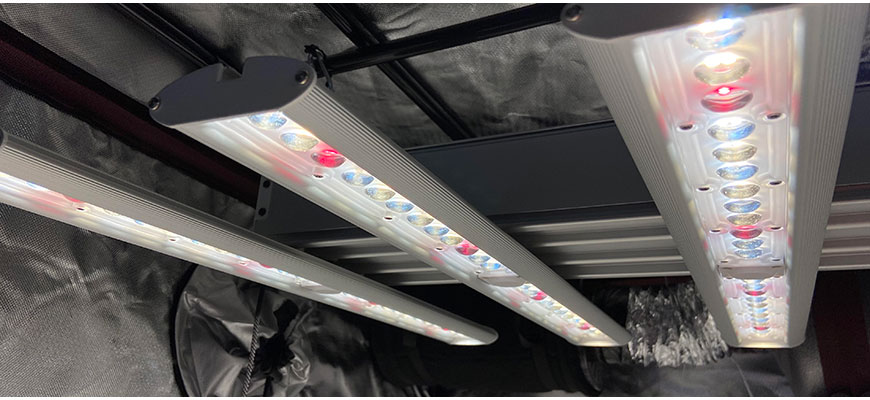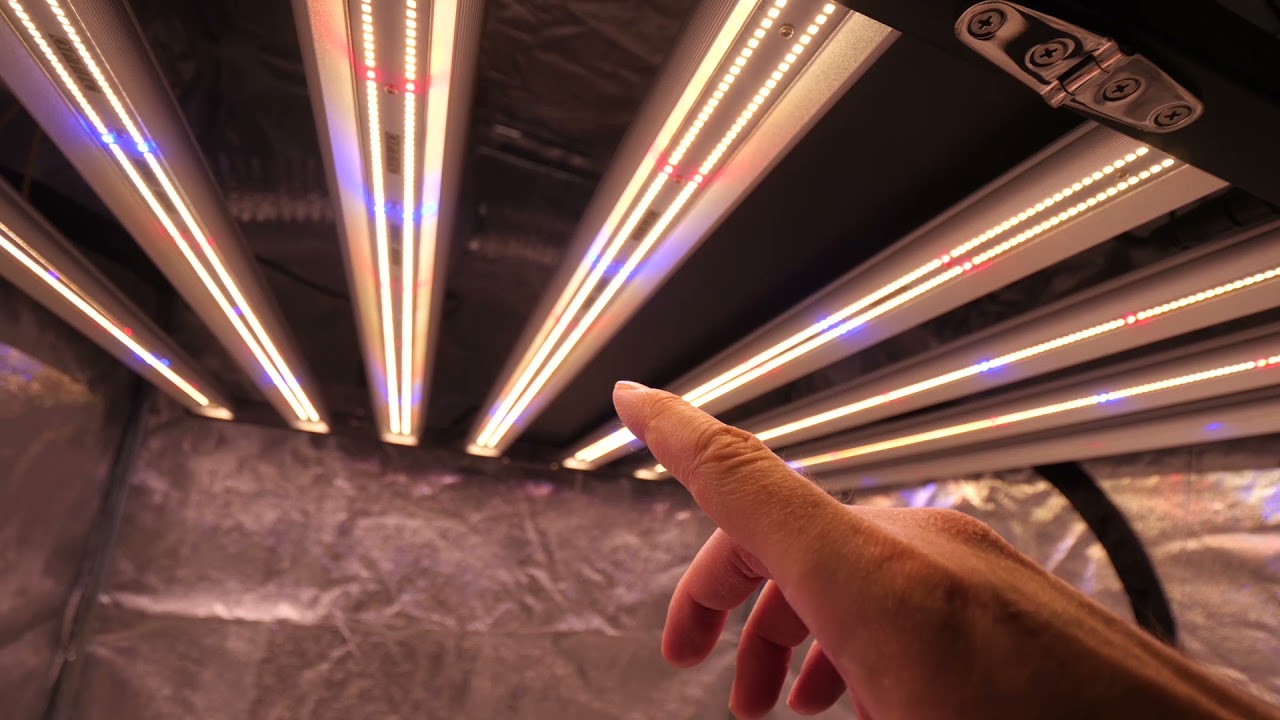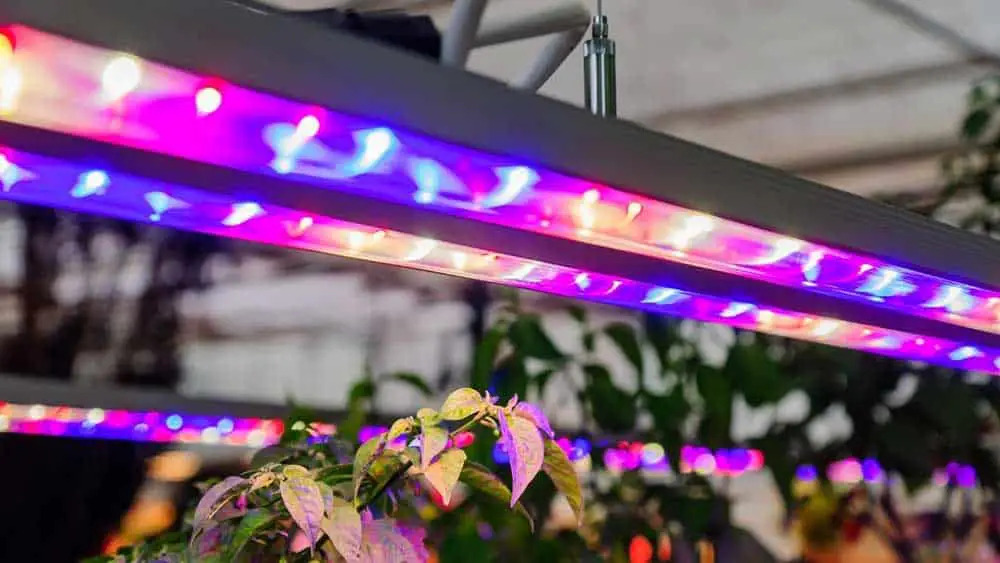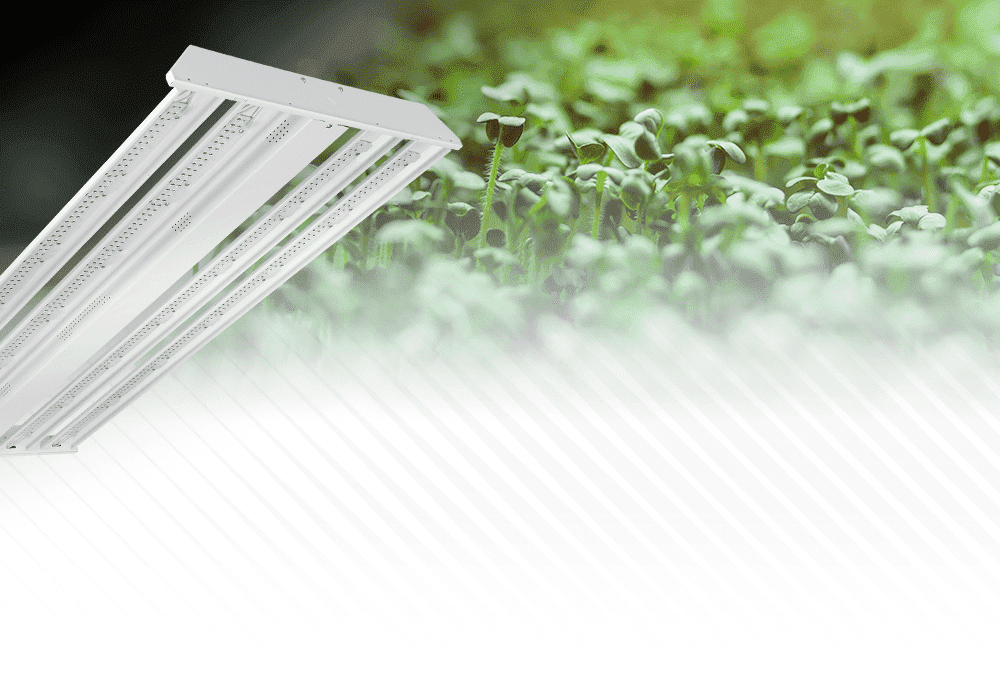LED vs. HPS: Which One Is The Best For You?
When it comes to indoor growing, choosing the right lighting system is crucial for plant growth and overall yield. The debate between LED and HPS lights continues to rage on, and it ultimately comes down to the unique needs of each indoor grower. Let's take a closer look at each system and their respective advantages.
Definition of LED and HPS
Light-Emitting Diode (LED) and High-Pressure Sodium (HPS) technologies are two popular lighting systems that are widely used in horticulture. LED lights are semiconductor devices that generate light when an electric current flows through them. HPS lights, on the other hand, use a gas discharge lamp that produces light by passing an electric current through a high-pressure sodium vapor.
Indoor growers often decide to use either LED or HPS lights based on a few factors, including the type of plants being grown, the growth stage of the plant, the size of the grow space, and the total amount of light output preferred. LED lights are a popular choice among indoor growers because of their energy efficiency and long lifespan, while HPS lights are traditionally preferred for their high-quality light intensity.
Comparing LED Grow Lights vs HPS Technology
When it comes to growing plants indoors, lighting plays a vital role in ensuring their healthy growth. With a plethora of lighting systems available, it can be challenging to decide which one is the best fit for your indoor growing needs. We will take a closer look at the differences between these two systems in terms of light spectrum, energy efficiency, upfront and operational costs, durability, and their impact on plant growth.
Upfront Cost
When it comes to choosing a grow light for your indoor growing needs, one of the primary factors to consider is the upfront cost. LED and HPS are two popular options, each with its benefits and drawbacks. Let's take a closer look at how upfront costs compare between these two types of grow lights.
Firstly, the upfront cost for LED grow lights tends to be higher than that of HPS lights. This is because LED technology typically costs more to manufacture and implement in a lighting system. However, LED lights do provide a lot of advantages when it comes to energy efficiency and longevity, which can make up for the initial investment over time.
The size and type of grow light system you need also play a significant role in upfront costs. For example, a high-quality LED light fixture with advanced features and capabilities will cost more than a basic HPS bulb. Additionally, certain features like digital ballasts or spectrums of light can drive the price up even further for both LED and HPS grow lights.
Despite the higher upfront costs associated with LED grow lights, there are ways to save money without compromising on quality. One option is to choose a smaller LED fixture that is more energy-efficient and still provides sufficient light to meet your needs. Another option is to invest in an older LED model that has been discontinued, as this can often give you a good balance between cost and quality.
Energy Costs
When it comes to indoor grow lights, energy costs are a significant consideration for growers. The amount of electricity consumed by the lighting system, and consequently, the cost of energy required to operate it, can have a considerable impact on a grower's budget.
HPS lights are known to consume a significant amount of energy, primarily due to the heat they produce. On the other hand, LED lights are more energy-efficient and produce less heat. As a result, LED lighting systems are often considered a more cost-effective option for indoor growers.
When operating an indoor grow room or tent, growers need to consider not only the upfront costs of their lighting system but also the ongoing operational expenses. This includes the costs associated with electricity consumption and bulb replacement.
LED technology has come a long way in recent years, and high-quality LED fixtures are available that offer significant energy savings when compared to HPS systems. While the initial investment in LED fixtures may be higher, the operational costs associated with LED technology can be significantly lower than that of HPS lighting.
Lifespan
When it comes to choosing between LED and HPS grow lights, the lifespan of the lighting system is an essential factor to consider. LED grow lights are known for their extended lifespan compared to HPS grow lights.
Under normal usage conditions, LED grow lights can last for up to 50,000 - 100,000 hours, while HPS grow lights have a lifespan of 24,000 - 36,000 hours. Several factors can influence the longevity of grow lights, including usage, temperature, and humidity levels.
To extend the lifespan of both LED and HPS grow lights, regular maintenance is crucial. For LED grow lights, regularly cleaning the diodes and ensuring proper ventilation can prevent overheating and prolong their lifespan. On the other hand, HPS grow lights require periodic replacement of bulbs and inspection of the digital ballast.
Maintenance Costs
When it comes to deciding between LED and HPS grow lights, maintenance costs and effort should be taken into consideration. Both lighting systems require regular maintenance to ensure healthy plant growth and maximum yields.
LED grow lights are known for their low maintenance requirements. The frequency of maintenance can be as little as once every six months, but it depends on the type and quality of the fixture. Cleaning the lenses and fans is the main task of maintenance for LED systems. LED lights produce very little heat, which means there is less chance of dust accumulation or light burn. These fixtures do not require specialized tools or knowledge, and the replacement of individual parts is rare.
On the other hand, HPS grow lights require more maintenance compared to LED systems. The frequency of maintenance can range from every three to six months. Common issues include the accumulation of dust on the bulb or reflector, as well as the need for frequent bulb replacement.
HPS lights also produce a lot of heat, which can lead to light burn and damage to plants if not managed properly. To properly maintain an HPS system, specialized tools such as a digital ballast are required, and replacement parts such as the bulbs must be purchased periodically.
Light Spectrum & Intensity
When it comes to choosing between LED and HPS lights, it's important to consider the spectrum and intensity of light each type of grow light produces. LED lights have a significant advantage over HPS lights in terms of customizability.
They offer a much broader range of spectrum options, allowing indoor growers to tailor the light specifically to the needs of their plants. In contrast, HPS lights tend to emit a more yellow spectrum of light that may not be ideal for all plants.
In terms of intensity, HPS lights have long been known for their ability to produce high levels of light. However, with advancements in LED technology, many high-quality LED systems can now offer comparable intensity levels to HPS lights. This means that growers can achieve the same level of light intensity with LED lights while enjoying the benefits of less heat and energy consumption.
Light Burn & Its Impact on Plants
When choosing the best lighting system for your indoor grow setup, it is crucial to consider the effects of light burn on your plants. Light burn happens when plants are exposed to light that is too intense or too close for an extended period, causing damage that impedes proper growth and development. Understanding how light burn impacts your plants and how it differs between LED and HPS lights will help you make an informed decision when choosing the best grow lights for your indoor garden.
- Optimal Light Intensity and Distance for Effective Lighting
It is essential to have the right intensity and distance for the type of lighting you are using to prevent light burn on your plants. The optimal distance between your LED or HPS light fixture and plants largely depends on the wattage of your light source and the growth stage of your plant.
Generally, HPS lights are more intense than LED lights, and they require a greater distance between the light source and plants. For HPS lights, a distance of 18-24 inches is ideal, while for LED lights, a distance of 12-18 inches is appropriate for optimum growth and development.
- Light Burn Symptoms on Plants
Light burn can manifest in different ways, but the symptoms include yellowing and drying of leaves, burnt tips, and overall stunted growth. These symptoms often occur when the plant is exposed to too much light or is too close to the light source. If unaddressed, light burn can be devastating to plant growth and development and can ultimately lead to the death of your plants.
- Impact of Light Quality and Spectrum on Light Burn
One significant difference between LED and HPS lights is their spectral output. LED lights produce a narrower spectrum of light, while HPS lights emit a broader spectrum that includes yellow and green lights.
Unlike LED lights, HPS lights can produce more lumens and penetrate dense canopies better. It is important to note, however, that HPS lights contribute to more significant heat output, which makes it necessary to maintain a greater distance between light fixtures and plants to prevent burn damage.
HPS vs LED Grow Light: Advantages and Disadvantages
Indoor growers seeking to optimize their plants' growth have to decide which lighting system to use, with the two most popular options being HPS and LED grow lights. Each system comes with its benefits and drawbacks, and understanding them can help you make an informed decision.
When it comes to the spectrum of light, HPS systems are known for producing spectrums that are ideal for the flowering stage of plants, while LED technology allows growers to provide a range of spectrums for various growth stages. Moreover, LED lights are energy-efficient compared to HPS bulbs, and they generate less heat, leading to cooler temperatures in the grow room. This is important as plants thrive in cooler temperatures.
However, LED grow lights come with a higher initial investment cost than HPS lights. While the latter has a lower upfront cost, operational costs like electricity consumption are much higher in the long run. HPS lamps are energy-hungry, which translates to higher energy bills and extra heat radiated, calling for increased ventilation to maintain cooler temperature ranges for the plants.
The type of light and how it penetrates through the canopy also affects plant growth. High-pressure sodium lights have higher light intensity and penetrate deeper into the plants' canopy, enabling more significant growth. In contrast, LED grow lights don't emit as much light and may require more extended hours to achieve suitable plant growth.
Results Growers Have Seen Between LED Grow Lights vs HPS
Research has shown that different light spectrums and intensities can significantly impact plant growth. LED technology emits a more balanced light spectrum with lower heat output, which can help plants develop better root systems and stronger stems. On the other hand, HPS lights emit a yellow light spectrum that promotes flowering stages in plants.
Although LED grow lights consume less energy and have a more extended lifespan than HPS bulbs, they typically have higher upfront costs. LED systems also offer better energy efficiency, resulting in lower operational costs than HPS lights. They produce less heat, which allows for cooler temperatures in the grow room, and can reduce the risk of light burn on plants.
HPS lights, however, have higher light intensity and penetration capabilities than LED systems, making them more effective in larger grow spaces. However, this increased light intensity may result in more light burn on plants. HPS lights also have a shorter lifespan than LED lights, which can lead to higher operational costs over time.
Check out this review for Spider Farmer SF 4000.
Which Option is Better For You?
In general, LED lights are the better option for indoor growers who want to maximize energy efficiency and plant growth, considering their high-quality light spectrum and longer lifespan. HPS lights may be a better option for growers who have a limited budget or those who require a light source that can adequately penetrate plant canopies.
Ultimately, the decision of which option is better for you will depend on your particular needs and goals as a grower. It's crucial to consider the advantages and disadvantages of both LED and HPS lights and determine which features are most important to you before making a decision.












